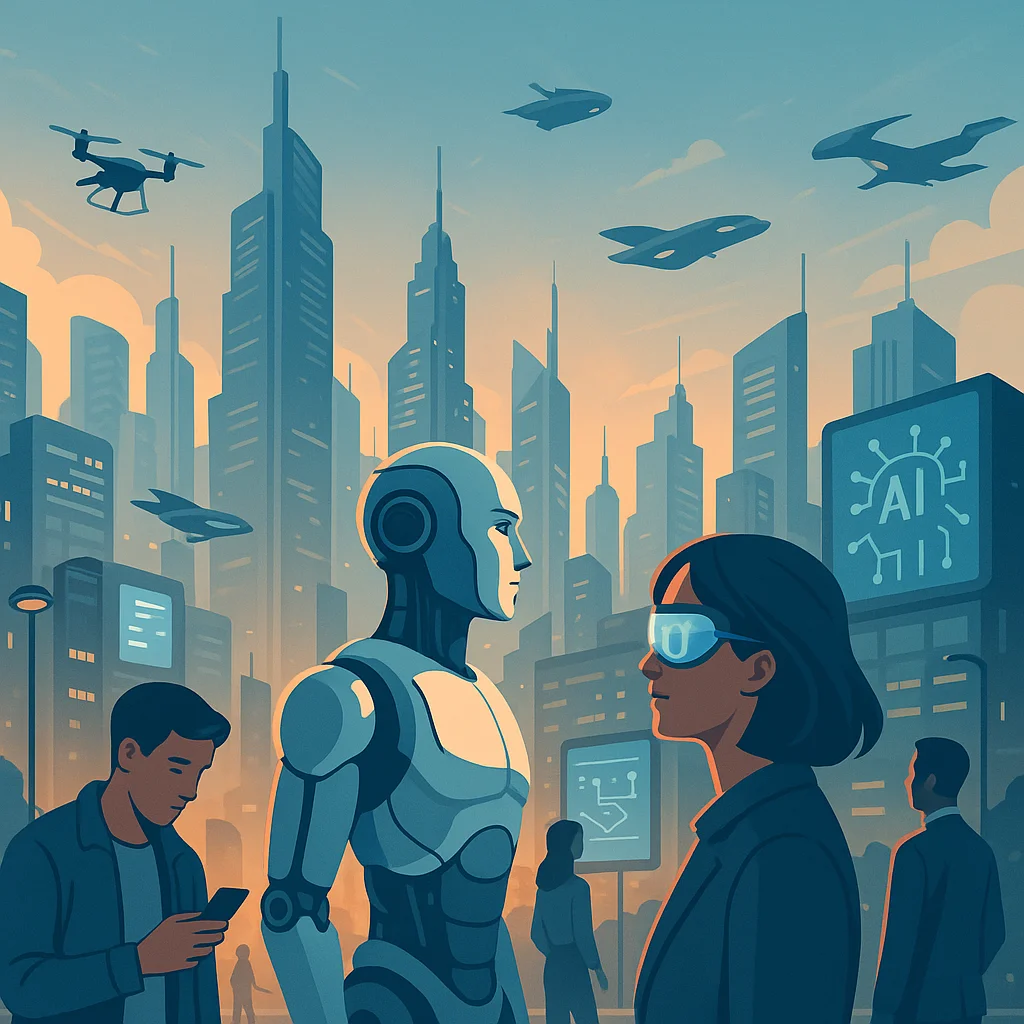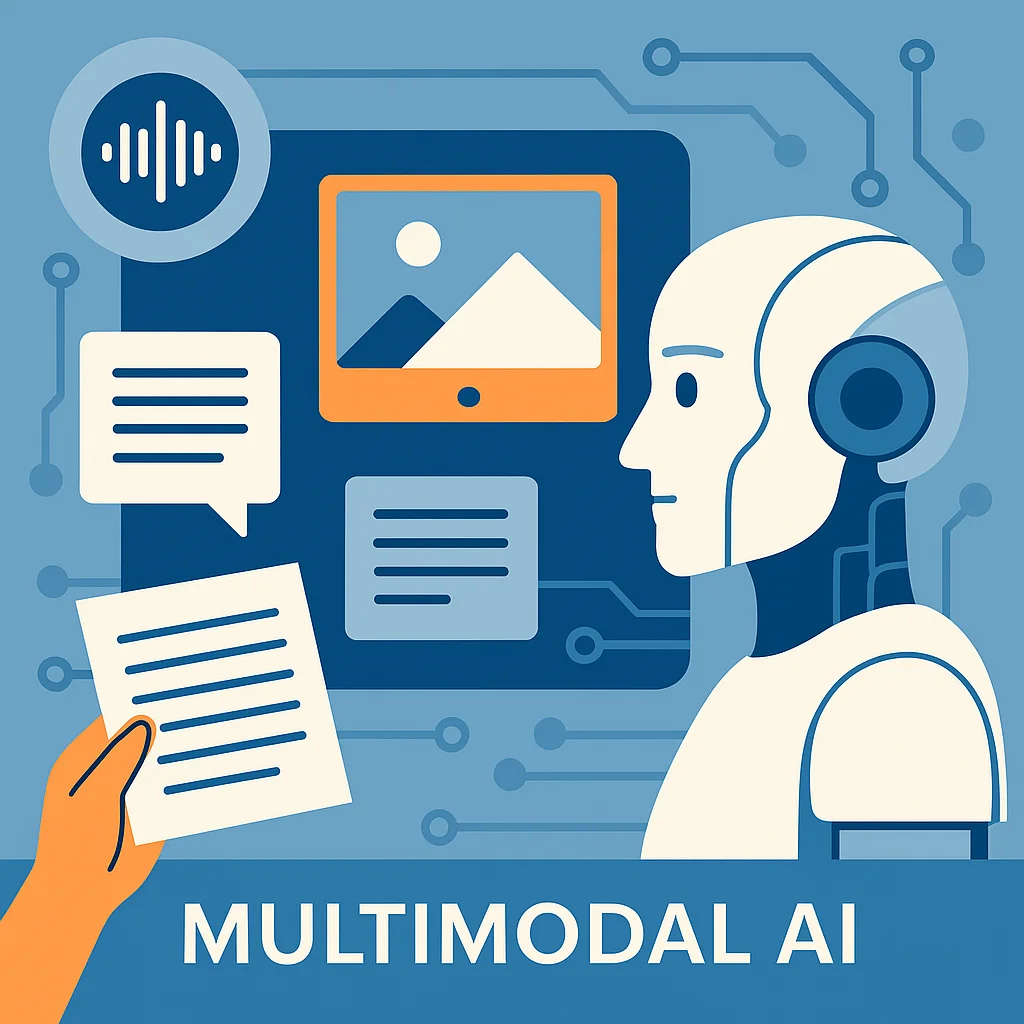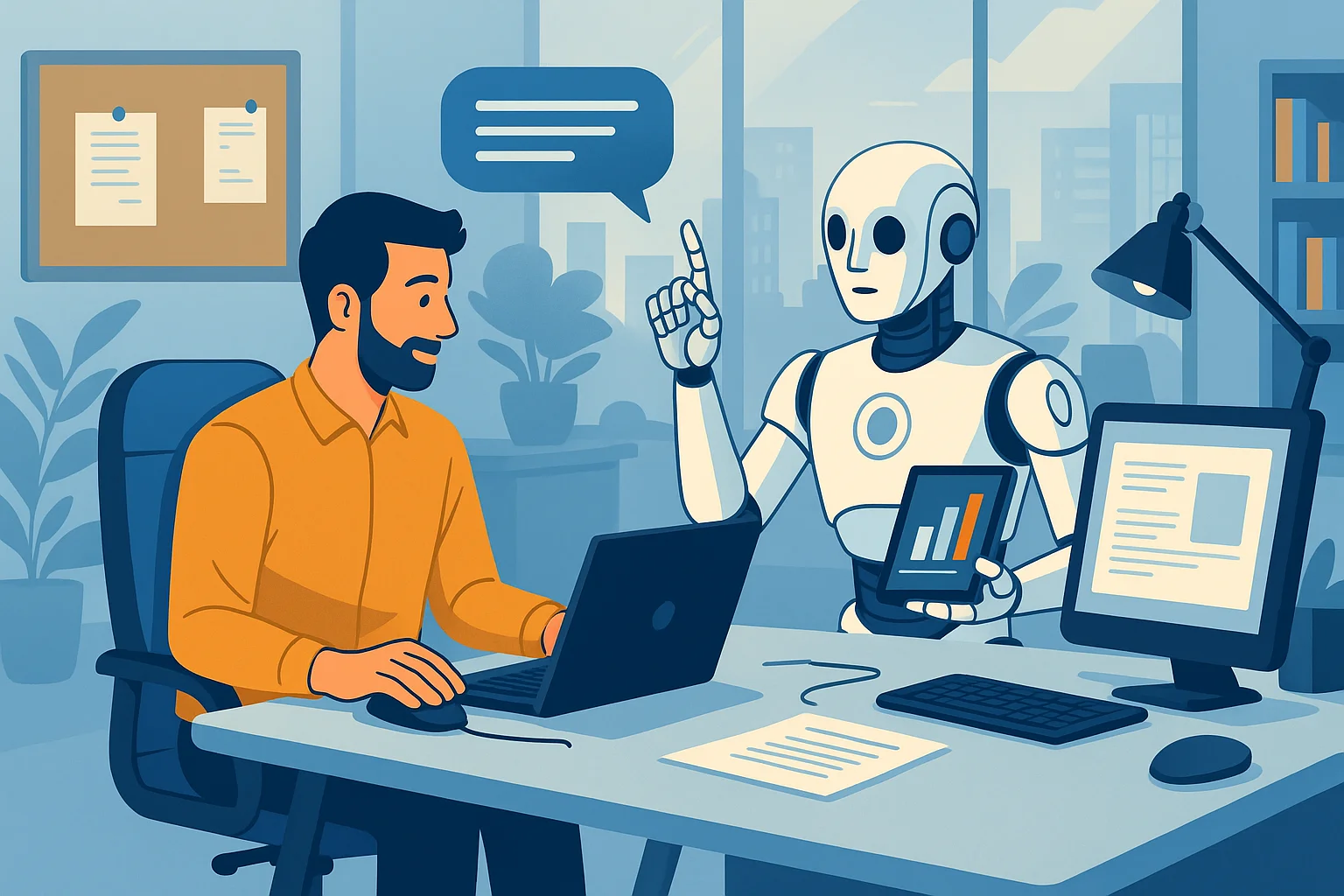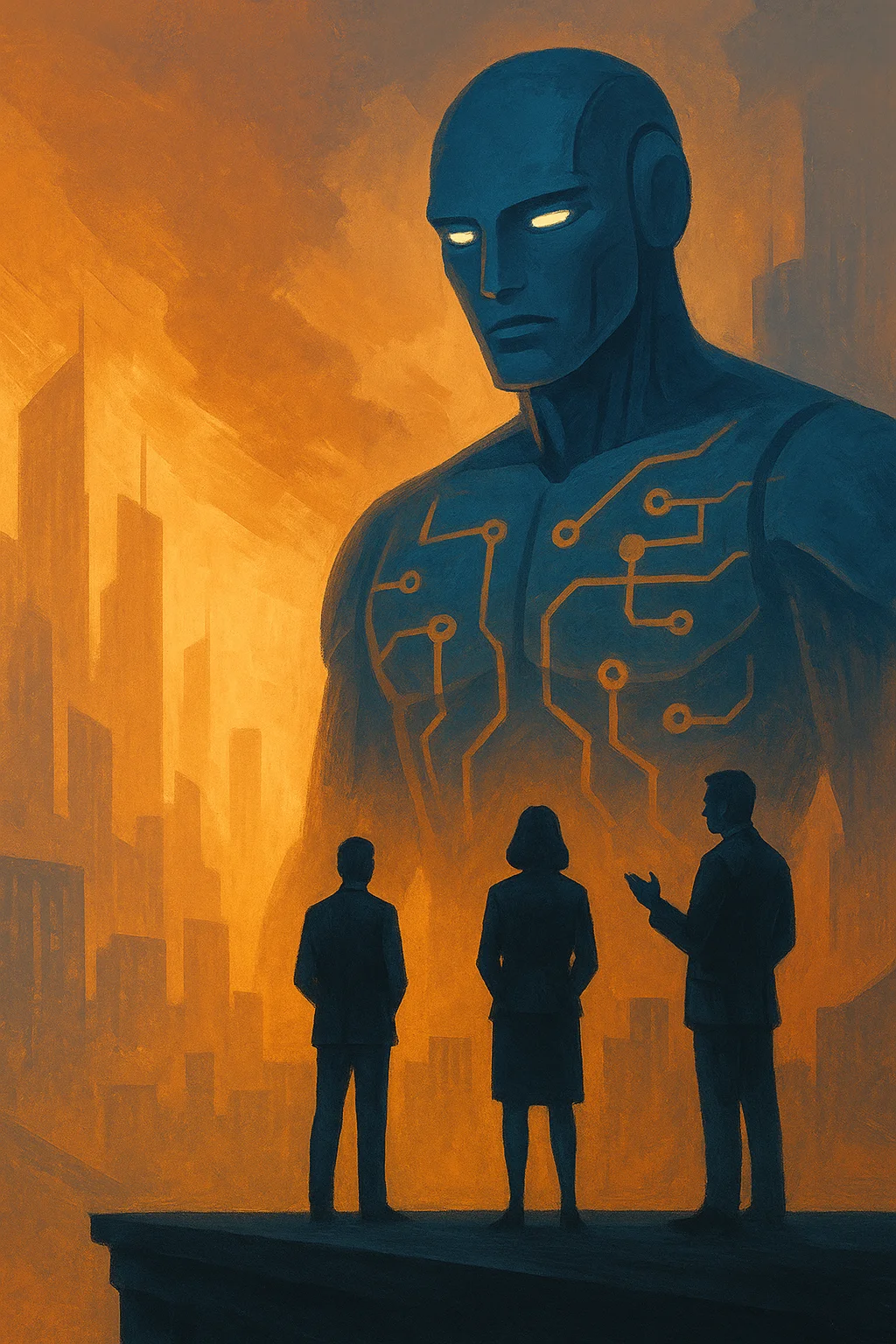The Future of AI: Where Are We Headed?

Introduction
Artificial Intelligence is evolving faster than most technologies in modern history. From early rule-based systems to today’s large language models (LLMs) that can write essays, generate images, and even perform basic reasoning, AI is rapidly expanding its capabilities and presence across industries. But as impressive as current tools like ChatGPT, Gemini, and Claude are, they only hint at what’s coming next.
This article explores the future of AI — not in the far-off, science fiction sense, but in the next 5 to 15 years. We’ll examine where AI is headed: toward more general intelligence, deeper sensory integration (multimodality), autonomous decision-making, transformative effects on work, and greater regulation. Understanding these directions is critical not only for technologists but for anyone affected by this rapidly growing ecosystem — which is to say, everyone.
From Narrow to General Intelligence
Today’s AI is still considered “narrow” or “weak” — highly capable in specific tasks but rigid outside its domain. A model that plays chess can’t drive a car. A model that answers medical questions doesn’t understand biology. The holy grail of the field is Artificial General Intelligence (AGI): a system capable of performing any intellectual task a human can, and adapting to new ones.
Some believe we’re closer than we think. OpenAI, DeepMind, and Anthropic have all declared AGI as their explicit goal. Emerging systems already demonstrate early signs of generalization — like transferring knowledge across domains or solving novel tasks with minimal fine-tuning. But we’re not there yet. Current models are still brittle, reliant on massive datasets, and prone to hallucination or bias.
Reaching AGI likely requires several breakthroughs: longer-term memory, better reasoning, improved learning efficiency, and grounded understanding of the physical world. Whether that takes five years or fifty remains hotly debated. But research is accelerating, and so is investment — meaning progress could come suddenly, rather than gradually.
The Rise of Multimodal AI

A major trend shaping the future of AI is multimodality — the ability to process and generate not just text, but also images, audio, video, and even code, all within the same model.
Humans naturally integrate multiple senses when understanding the world. AI is starting to do the same. OpenAI’s GPT-4o, Google’s Gemini, and Meta’s image-capable LLaVA models all represent steps toward a future where AI can seamlessly analyze a photo, read a document aloud, translate a video’s dialogue, and respond conversationally — all in real time.
Multimodal models unlock entirely new use cases: virtual tutors that read textbooks and diagrams aloud, AI personal assistants that interpret what you see through AR glasses, or tools that summarize meetings by combining transcripts, facial cues, and tone of voice.
As these systems mature, they will likely redefine human-computer interaction. The interface of the future may not be a keyboard or touchscreen — it may be natural language and sight, in both directions.
Autonomous Agents and Goal-Directed AI
Another promising frontier is the rise of autonomous agents — AI systems capable of planning and executing sequences of actions to achieve goals in dynamic environments. Unlike chatbots that respond passively, agents operate more like coworkers or software robots: they take instructions, break them into subtasks, and act across time to complete them.
Examples include:
- AutoGPT and AgentGPT , which string together multiple prompts and tools to complete open-ended tasks.
- ReAct frameworks that blend reasoning and acting in real-world web environments.
- AI agents embedded in browsers, spreadsheets, IDEs, or enterprise systems to handle routine workflows.
Long-term, these agents could become digital task managers, researchers, or even entrepreneurs. But today’s implementations are early. Many lack robustness, make costly mistakes, and struggle to maintain memory over long sequences.
Solving these limitations involves improving memory architecture, reasoning chains, environment awareness, and especially safety. Autonomous agents introduce new risks — from executing harmful instructions to failing silently. But done right, they could be a defining part of the next AI wave.
AI in the Workplace: Threat or Transformation?

Few areas will be more disrupted by AI than the modern workplace. Already, AI is reshaping how knowledge workers write, analyze data, code, design graphics, and communicate. What used to take hours — drafting reports, composing emails, generating charts — can now be done in minutes using tools like ChatGPT, Notion AI, and Microsoft Copilot.
The big question is: will AI take jobs or make them easier?
The answer is: both. Many repetitive or rule-based roles — transcription, basic data entry, customer support — are at risk of automation. But AI also enables professionals to focus on more strategic, creative, or interpersonal work. A financial analyst might use AI to generate models faster. A marketer might use it to brainstorm and test new campaigns. A lawyer might draft briefs with AI assistance and spend more time on case strategy.
New job categories are also emerging: AI trainers, prompt engineers, model auditors, synthetic data specialists. According to reports by McKinsey and the World Economic Forum, while millions of roles may be lost, even more may be created — if workers are reskilled in time.
The transformation won’t be uniform. High-tech sectors will adapt quickly, while legacy industries may lag. Equity will depend on education, infrastructure, and policy. But one thing is clear: AI is not just a tool; it’s a new layer of work itself — one that will reshape careers, workflows, and even the definition of productivity.
AI Regulation and Global Policy
As AI becomes more powerful and widely deployed, governments and institutions around the world are grappling with how to regulate it. The stakes are high: poorly governed AI could lead to widespread misinformation, job loss, surveillance overreach, or even systemic harm. But overregulation could stifle innovation and widen the gap between tech leaders and the rest of the world.
Several regions are leading the way. The European Union’s AI Act is the most comprehensive effort so far. It categorizes AI applications by risk level and imposes strict rules on high-risk systems (e.g., facial recognition or hiring algorithms). Transparency, data governance, and human oversight are central pillars.
In the U.S., the regulatory approach has been more fragmented. President Biden’s Executive Order on AI issued in 2023 mandates federal agencies to assess AI risks and promotes guidelines around safety, fairness, and civil rights. However, there's still no unified federal AI law.
International bodies like the OECD and the G7 have also launched working groups on AI ethics, transparency, and alignment. Meanwhile, tech companies are self-organizing via frameworks like the Partnership on AI and AI Safety Commitments, promising not to release dangerous systems recklessly.
Still, the pace of regulation lags behind the pace of innovation. Many policymakers lack the technical background to understand the implications of transformer architectures, fine-tuning, or model interpretability. Bridging that gap — through collaboration between academia, government, and industry — will be crucial in ensuring AI evolves with human values, not just market incentives.
AI and Creativity: Expanding Human Potential
AI isn’t just about logic and automation — it’s also becoming a creative partner. From composing music and generating paintings to helping write novels and screenplays, AI tools are enabling new forms of artistic expression. Rather than replacing creators, these tools often expand their capabilities.
Programs like DALL·E, Midjourney, and Stable Diffusion allow artists to explore visual concepts quickly and iterate on ideas. Writers use tools like Sudowrite or ChatGPT to overcome writer’s block, generate dialogue, or outline plot arcs. Musicians and video editors use AI to remix audio, clean up vocals, or sync visuals to tempo.
In science and engineering, AI is accelerating discovery. AlphaFold predicted the structure of thousands of proteins, aiding biology research. In architecture, AI is used to generate layout options or optimize building materials. In fashion, AI helps predict trends and prototype designs.
The future may bring hybrid workflows where humans and machines co-create. Imagine a filmmaker who describes a scene and watches AI generate a visual storyboard, or a researcher who drafts a hypothesis and uses AI to scan literature and propose experiments.
Of course, this raises questions about authorship and copyright. Who owns the rights to AI-assisted content? Are these tools simply extensions of human creativity, or are they creators in their own right? As creative AI becomes more powerful, the legal and philosophical debates will grow — but so will the opportunities for innovation.
The Environmental Cost of AI
While AI promises economic and social benefits, it also comes with a significant environmental footprint. Training large-scale models like GPT-4 or Google’s Gemini requires thousands of high-performance GPUs running for weeks or months — consuming massive amounts of electricity.
A 2019 study found that training a single large NLP model could emit as much CO₂ as five cars over their lifetimes. As models scale into the hundreds of billions of parameters, this impact only grows. And that’s just training — inference (using models in production) also demands energy, especially for services with millions of users.
This has sparked a growing interest in green AI — approaches to reduce computational overhead without sacrificing performance. Some strategies include:
- Model pruning and quantization to shrink model size
- Transfer learning to reuse knowledge instead of training from scratch
- Efficient architectures like distillation or sparse attention mechanisms
- Low-power hardware optimized for inference
Cloud providers are also investing in renewable energy and carbon offsets. But to make AI truly sustainable, the field may need to shift from a “bigger is better” mindset toward one focused on efficiency, reuse, and environmental responsibility. After all, intelligence that ignores its ecological impact may not be that intelligent in the long run.
The Long-Term Outlook: Promise and Peril

Looking ahead, the possibilities for AI are both thrilling and sobering. On the one hand, AI could help cure diseases, combat climate change, revolutionize education, and uplift billions of people. On the other hand, poorly aligned AI systems — especially those approaching human-level cognition — could pose serious risks to society.
This is the domain of AI alignment and existential safety — fields focused on ensuring powerful AI systems behave in ways that match human intent and values. Researchers worry that advanced models might develop unintended goals, exploit loopholes in objectives, or outpace human oversight in multi-agent systems systems.
While this may sound speculative, leaders in the field take it seriously. OpenAI’s charter includes a commitment to long-term safety. DeepMind has an AI safety research unit. Anthropic was founded explicitly to explore constitutional AI — models trained with built-in ethical guidance.
More broadly, as AI becomes embedded in national security, finance, and infrastructure, risks escalate. Malicious use (e.g., deepfakes, disinformation), accidental failure (e.g., bias in critical systems), and runaway processes (e.g., autonomous agents acting unpredictably) are all challenges that require vigilance and proactive governance.
The path to superintelligence may be long or short — no one knows for sure. But by preparing for the hardest problems early, we increase the odds that advanced AI will remain a tool for flourishing, not a source of crisis.
Conclusion
The future of AI isn’t written in code yet — it’s being shaped by the choices we make today. Whether it brings general intelligence, human-machine collaboration, or profound disruption depends on how we develop, deploy, and regulate this technology.
From multimodal agents and workplace transformation to climate impact and creative empowerment, the AI landscape is growing more complex — and more influential — by the day. We must approach it with curiosity, caution, and commitment to human values.
AI is not destiny. It's a reflection of human ambition, intelligence, and sometimes, hubris. Its future is our future — and it's still under construction.